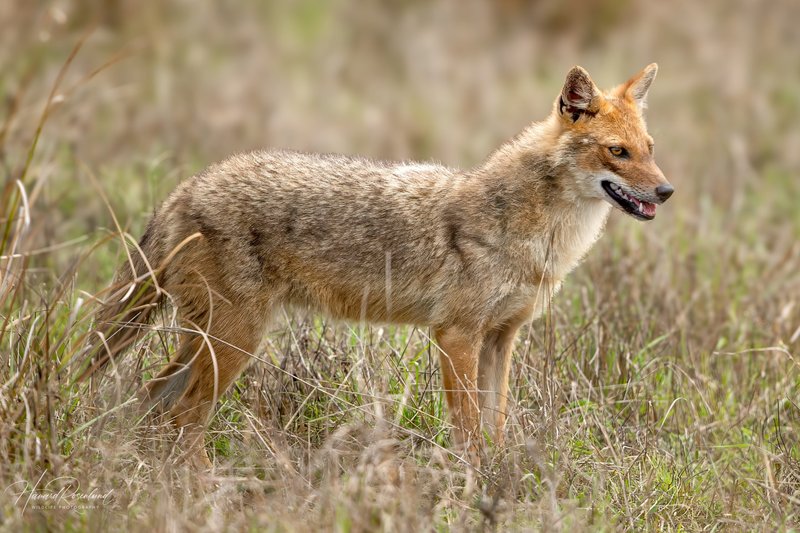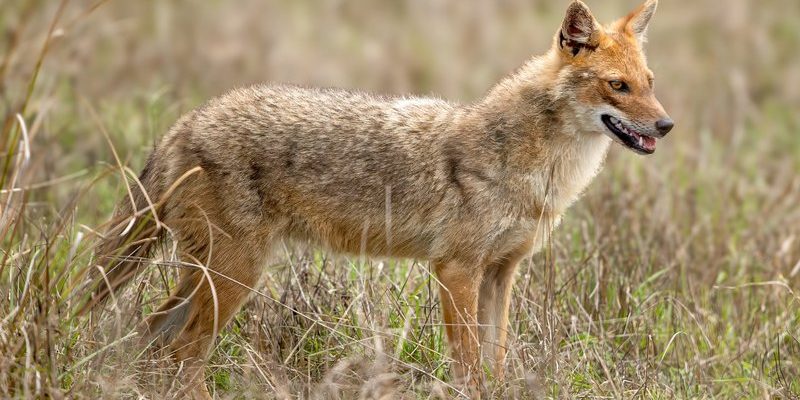
Imagine a world where food and water are hard to find, and the weather can be unforgiving. That’s the everyday reality for golden jackals. They’re not just surviving; they’re thriving by using their intelligence, resourcefulness, and social skills. Let’s break down how these adaptable creatures make it in some of the harshest environments on the planet.
Understanding the Golden Jackal
Golden jackals are medium-sized canids found across various regions in Africa, Europe, and Asia. Their fur is typically a mix of golden-brown colors, allowing them to blend into their environments and avoid predators. Standing about two feet tall and weighing between 20-30 pounds, they resemble a smaller version of a wolf.
You might be wondering about their lifestyle. Golden jackals are primarily nocturnal, which means they’re most active at night. This behavior helps them avoid the heat of the day in hot climates. They live in family groups, which not only strengthens their social bonds but also enhances their survival abilities. Together, they can hunt, defend territory, and raise puppies, sharing both the work and the rewards.
Adaptation to Varied Diets
Golden jackals are opportunistic eaters, meaning they’ll consume whatever food is available. This adaptability is crucial for survival in harsh conditions where food sources may fluctuate. From small mammals and birds to fruits and even carrion, they have a varied diet that allows them to remain flexible.
For instance, in the hot African savannas, they often hunt small ungulates and rodents. In contrast, in more urban areas, they might scavenge from human waste or hunt small domesticated animals. Their ability to switch diets based on availability helps them thrive where other predators might struggle.
Here’s an interesting tidbit: golden jackals are also known for their incredible hunting strategies. They often hunt in pairs or small groups, using teamwork to outsmart their prey. This strategy not only increases their chances of a successful hunt but also reinforces social ties.
The Role of Social Structure
Let’s dive deeper into the social lives of golden jackals. Their packs are typically made up of a breeding pair and their offspring. This family-oriented structure ensures that they work together for survival. Each member plays a role—whether it’s scouting for food, defending their territory, or caring for the young.
You may find it fascinating that these jackals communicate using a variety of vocalizations, like howls and barks. This communication helps them coordinate during hunts, warn of danger, or even mark territory. It’s like having a built-in alert system that keeps the pack connected, especially when navigating harsh environments.
Furthermore, their social bonds can lead to shared parenting, where pups are looked after by multiple pack members. This ensures better survival rates for the young jackals, allowing them to grow into skilled hunters themselves.
Mastering the Art of Adaptation
One of the most striking features of golden jackals is their remarkable ability to adapt to various environments. Whether they’re in the heat of the desert or the cold of the mountains, these animals have a knack for making the best of their circumstances.
They’re known to alter their hunting and foraging methods based on the landscape. In dense forests, for example, they may rely more on stealth and patience, while in open areas, they might be more aggressive and swift in their pursuits. This flexibility is crucial for survival in ever-changing conditions, where staying adaptable can mean the difference between life and death.
In addition to their physical adaptations, golden jackals also exhibit behavioral flexibility. They adjust their activity patterns based on factors like temperature and food availability. For instance, during extreme heat, they may hunt during cooler hours instead of mid-afternoon.
Water Conservation Techniques
In arid environments, water is precious. Golden jackals have developed several techniques to conserve water, which is essential for their survival. They often get moisture from their food, such as fruits or small prey. Additionally, they have been known to minimize their physical activity during the hottest parts of the day to reduce water loss.
Interestingly, these jackals can also go long periods without drinking, relying on their highly efficient kidneys to conserve water. Their bodies adapt to the dehydrated conditions, allowing them to thrive even when water sources are scarce.
An important part of their success is being adaptable in their search for water. In some regions, they might dig in dry riverbeds or look for animal tracks that could lead them to hidden water sources. This kind of clever thinking is essential for fending off dehydration in harsh climates.
Facing Threats and Predation
Golden jackals are not at the top of the food chain, and they face threats from larger predators like lions, leopards, and even humans. However, their survival tactics help them cope with these challenges.
For instance, golden jackals are known for their agility and speed, which they use to evade larger predators. When threatened, they can quickly flee or hide in dense vegetation. Their social nature also plays a role; by hunting in packs, they can defend against attackers better than when they’re alone.
Moreover, their keen sense of smell aids them in detecting danger from afar. Just imagine being able to sense a predator before it even gets close! This advantage allows them to be cautious and stay one step ahead, ensuring their safety in harsh environments.
The Impact of Human Activity
Unfortunately, golden jackals are not immune to the impacts of human activity. Habitat loss due to urbanization, agriculture, and climate change poses a significant threat to their populations. In some regions, they’re even hunted for their fur or perceived as pests.
However, these adaptable creatures show resilience in the face of such changes. They often adjust their habitats, finding ways to live alongside humans. In urban areas, golden jackals have been spotted scavenging through garbage or hunting small pets. While this behavior can lead to conflicts with humans, it’s a testament to their survival skills.
Conservation efforts are vital for ensuring that golden jackals can continue to thrive. Protecting their natural habitats and raising awareness about their role in ecosystems can help maintain their populations and the balance of their environments.
Golden jackals are fascinating creatures that remind us of nature’s incredible ability to adapt and thrive in the toughest of circumstances. Their survival skills, from forming social structures to mastering diverse diets and conserving water, demonstrate a blend of cleverness and resilience.
As we learn more about golden jackals, it’s essential to recognize the challenges they face, especially due to human activities. By understanding and supporting conservation efforts, we can help ensure that these remarkable animals continue to play their role in the ecosystems they inhabit.
So next time you think about survival, remember the golden jackal. They may not have the fame of lions or wolves, but they possess a unique set of skills that allow them to stand strong in the face of adversity. Who knew survival could be so stylishly cunning?

